Packrat: he collects so much garbage that such landfills can last for years (7 photos)
What is the bush-tailed wood hamster, or packrat (Neotoma cinerea) famous for? Well, such virtues are often discussed in scandalous TV programs, the same stories where an senile grandmother collects a bunch of rubbish in her apartment for years. Only our heroes do this while being of sober mind and sound memory. They also regularly urinate on all the carefully collected garbage, compacting it so tightly that their landfills last for thousands of years! 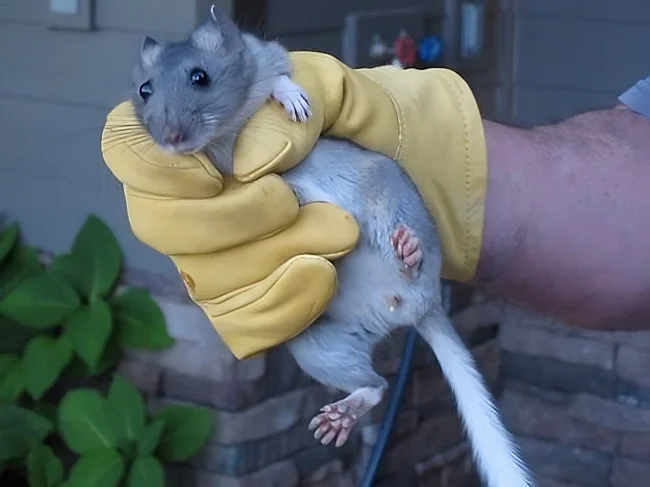
- Sveta, stop bringing all kinds of nonsense into the house! — I NEED ANOTHER BASKET!
Our hero lives in western Canada and the USA. Prefers rocky and forested areas. It is quite easy to distinguish bushy-tailed flea hamsters from domestic hamsters. The rodent looks more like a mouse than a furry pet. But unlike mice and rats, packrats have round ears, bushy whiskers, and a fluffy tail, like a squirrel. And the functionality is the same - the rodent uses it for balance and heating. The last point is especially important, because animals do not hibernate. Maximum - a short stupor. So you have to cover yourself with part of your body, like a blanket. And the same landfill serves as a shelter for rodents in cold weather! 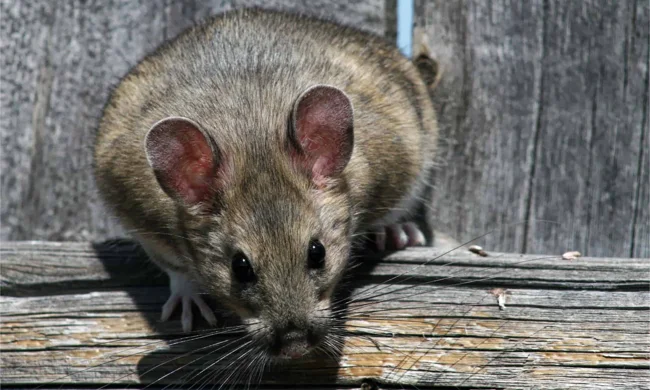
By rodent standards, packrats are quite large - they weigh up to 600 grams. At the same time, the bushy-tailed forest hamster is the largest representative of its genus.
The largest piles of garbage grow up to 2 meters in height. And the maximum length of packrat, for a moment, is only half a meter, another half of which is on the tail! The animals devote their entire lives to collecting all sorts of things and arranging their garbage heap. You can find anything there: bones, branches, leaves, paper, buttons, coins, beads, feces of other animals. 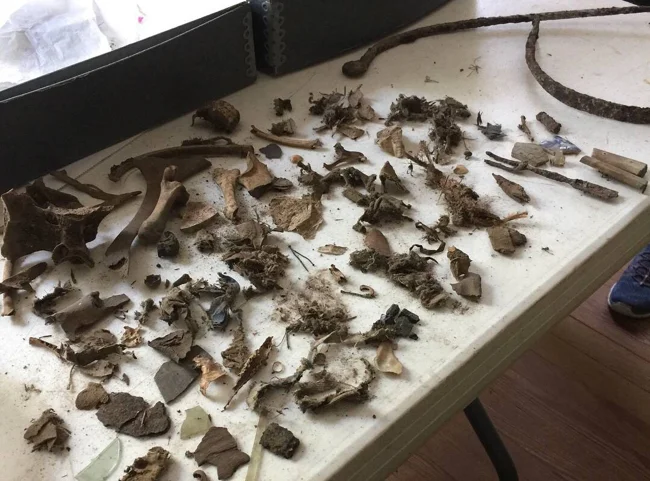
All this junk is just a small part of the treasures from the hamster’s hut.
Having laid out their wealth in a sloppy pile, rodents do two things. They urinate copiously and constantly on their landfill and build a neat and soft nest of plant materials right under it. Don't rush to screw up! Everything about hamsters is thought out down to the smallest detail, and their secretions do two things at once. The first, of course, is the designation of the territory. Although it is small in rodents, they will not tolerate their fellow creatures. 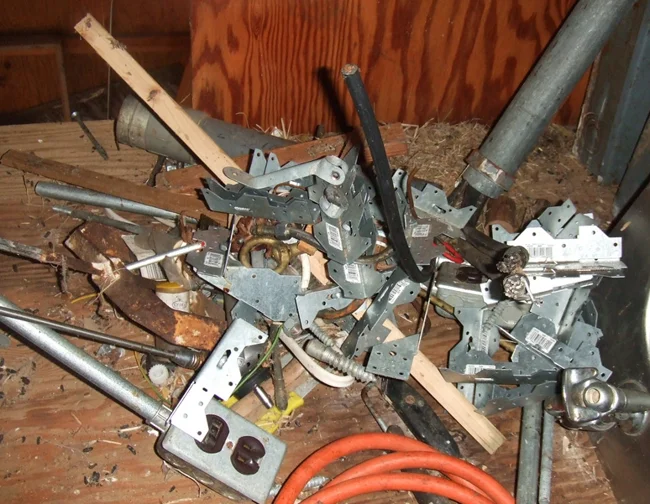
This is not a landfill! It's a creative mess!
The second is to strengthen the garbage heap. The digestive and excretory systems of the packrat body are designed in such a way that they excrete an insoluble salt, calcium oxalate, in their urine. The liquid permeates all the trash, dries, crystallizes and firmly holds everything together like cement. Thanks to this building material, hamster huts can last up to 40,000 years in their original form! 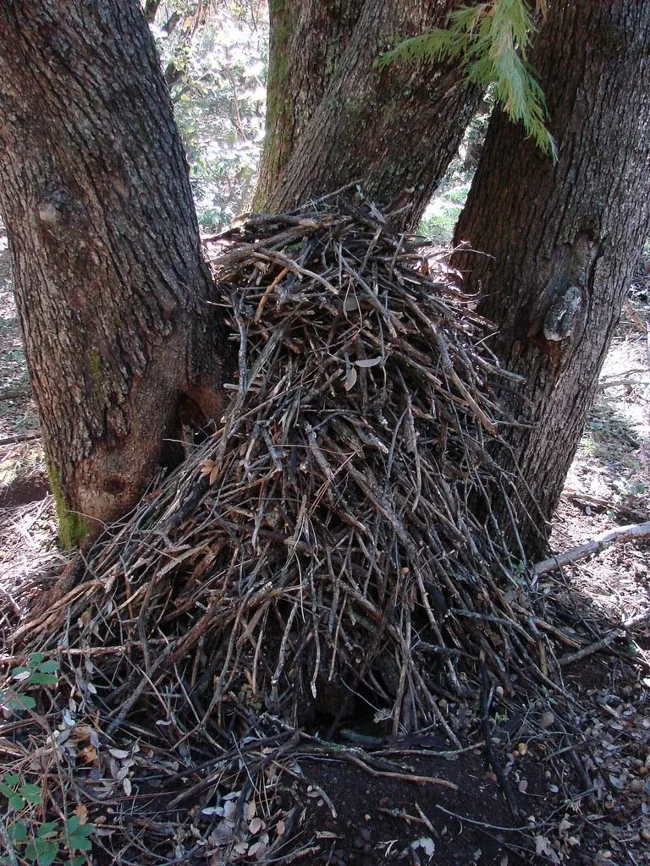
Most often, hamsters make their homes in rock crevices. But it happens that burrows under the roots of trees, and even cacti, become home!
Such durable structures retain heat well, so that hamsters feel quite comfortable in a nest under a landfill even in bad weather. Sometimes the sworn enemies of bushy-tailed animals blatantly take advantage of the capabilities of such structures. For example, rattlesnakes. In summer they actively hunt rodents. But in winter they quietly and peacefully crawl to those they didn’t have time to eat in order to warm themselves! Such impudence! 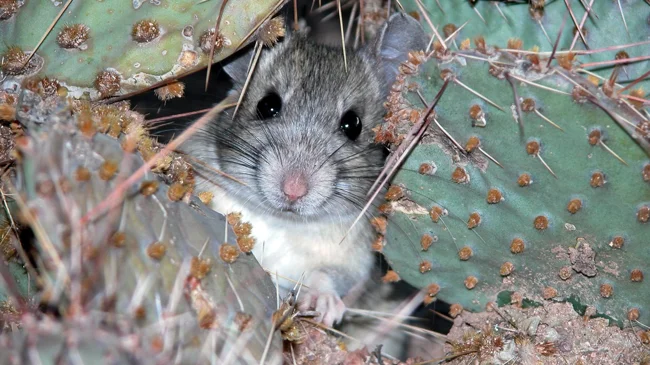
The perfect introvert's refuge!
The breeding season for bushy-tailed hamsters begins in spring throughout most of its range and lasts until late summer. Animals preach polygamy and do not form permanent couples. Everything is as usual: males fight for the right to mate and run off into the sunset as soon as the job is done. And the females clean up the consequences of such meetings. Usually this is a month of pregnancy and 2-6 newborn hamsters. In favorable conditions and with a sufficient amount of food: leaves, twigs, fruits, seeds and insects, the new mother can immediately get pregnant a second time.
Milk feeding lasts about a month in packratys, after which the young animals prepare to leave their native landfill. Males usually leave to conquer new lands, while females often remain close to their mother - their possessions can sometimes even overlap. Native children are the only ones whom the female will tolerate not only on her territory, but also in the burrow. Sometimes a mother shares her winter supplies with her daughters, which significantly increases the latter’s chances of survival. 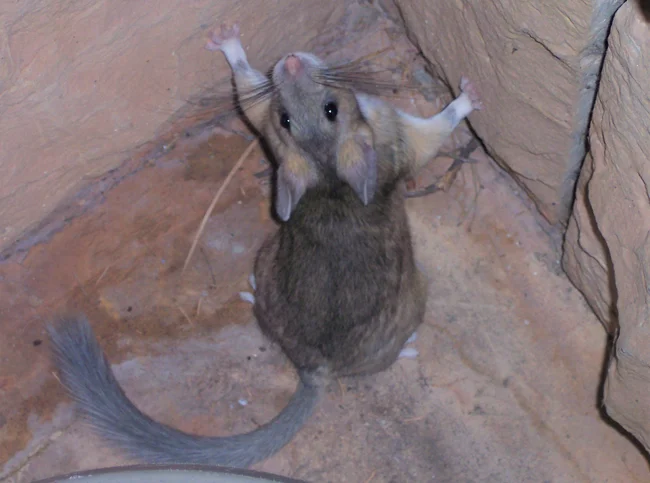
Mom, why was Natasha allowed to stay with you, but not me?! I don't want to live in a studio on the edge of town!
Having successfully survived the winter, by next summer the young animals will be ready to reproduce their own kind in geometric progression. Thanks to the vitality and rate of reproduction, today the population of bushtails is not in danger, although they are hunted by literally everyone who is slightly larger.
